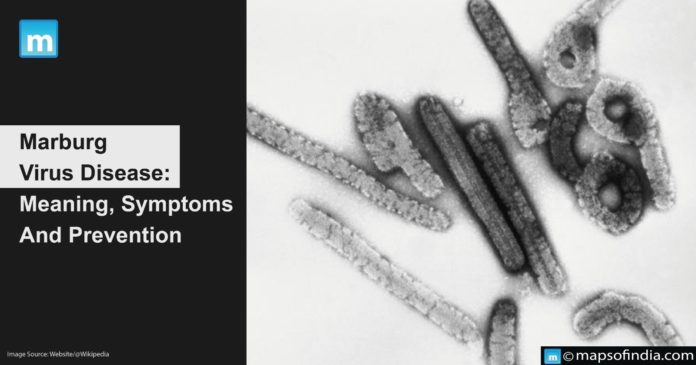What is Marburg Virus Disease?
The Marburg virus causes Marburg virus disease (MVD), an uncommon but severe viral hemorrhagic illness. The virus was titled after the German city of Marburg, which was initially discovered in 1967. Infected animals spread the illness to people, and it can pass from one individual to another through physical exposure to bodily fluids.
Symptoms of Marburg Virus Disease
The symptoms of Marburg virus disease can vary from person to person, but they typically appear within 5-10 days of exposure to the virus. The initial symptoms are similar to flu-like illnesses, including fever, headache, muscle aches, and weakness. When the illness worsens, more significant symptoms emerge, such as:
- Hemorrhagic fever: The disease can cause bleeding from the nose, mouth, and other body parts.
- Gastrointestinal symptoms and complications: Patients may experience abdominal pain, diarrhoea, and vomiting.
- Central nervous system symptoms and neural pattern: Patients may experience confusion, seizures, and coma.
Prevention of Marburg Virus Disease
Prevention of Marburg virus disease involves taking several measures to avoid contact with the virus. Here are some prevention measures:
- Avoid contact with infected animals: Avoid contact with animals, especially monkeys, chimpanzees, and bats, as they are known to carry the virus.
- Practice good hygiene: Wash your hands regularly with soap and water, especially after contact with someone infected.
- Wear protective clothing: If you are in close contact with someone infected, wear gloves, masks, and other protective clothing to reduce the risk of infection.
- Quarantine: Isolation and quarantine of infected individuals are essential to prevent the spread of the disease.
Treatment options for treating Marburg Virus Disease
Marburg virus sickness has no particular therapy or cure. Therapy is comprehensive and concentrates on relieving symptoms and lowering the risk. Some of the therapy possibilities are as follows:
- Fluid replacement: Patients with Marburg virus disease often experience severe dehydration due to vomiting and diarrhoea. They require intravenous fluids to replace lost fluids and electrolytes.
- Oxygen therapy: Patients who have difficulty breathing may require oxygen therapy.
- Pain relief: Pain medication can be given to alleviate symptoms such as headaches and muscle aches.
- Treatment of complications: Patients with Marburg virus disease may develop seizures, shock, and organ failure. Treatment of these complications may require intensive care and supportive therapy.
Research is ongoing to develop effective treatments and vaccines for Marburg virus disease.
Marburg virus disease is a rare but highly fatal viral hemorrhagic fever that can be transmitted to humans from infected animals. The disease has a high mortality rate, and no specific treatment or cure exists. Prevention of the disease involves avoiding contact with infected animals, practising good hygiene, and wearing protective clothing. Isolation and quarantine of infected individuals are essential to prevent the spread of the disease. While there is no specific treatment for Marburg virus disease, supportive care can be provided to alleviate symptoms and prevent complications.




